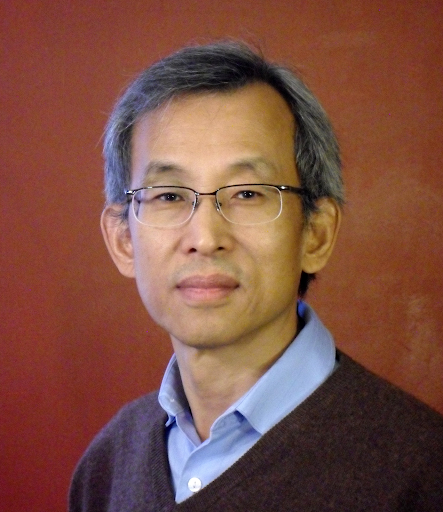Chirality and Kinetomagnetism
Georg Rieger (rieger@phas.ubc.ca), Brett Gladman (gladman@astro.ubc.ca) and Alannah Hallas (alannah.hallas@ubc.ca)
*All are welcome to this event!
Abstract:
Chirality, which arises from the breaking of mirror symmetries combined with any spatial rotations, plays a ubiquitous role in a wide range of phenomena, from the DNA functionality, vine climbing to the piezoelectricity of quartz crystals. It's important to note that chirality does not necessarily involve a screw-like twisting, and magnetic chirality means chirality in spin ordered states or mesoscopic spin textures. Despite being mathematically well-defined, the term "chirality" has been extensively used, often in confusing ways, in the physics community in recent years. In steady states, chirality (C) does not change with time-reversal operation, while chirality prime (C¢) denotes the breaking of time-reversal symmetry in addition to broken all mirror symmetries, combined with any spatial rotations. Various examples of magnetic chirality and chirality prime and their emergent phenomena, such as self-inductance, directional nonreciprocity in magnetic fields, current-induced magnetization, chirality-selective spin-polarized current, Schwinger scattering, magneto-optical Kerr effect, linear magnetoelectricity, and chiral tunneling will be discussed. Many of these phenomena can be understood with one hypothesis on kinetomagnetism that I will present. Some of these exotic phenomena have been recently observed, while many others require experimental confirmation in the future.
Bio:

Cheong has made ground-breaking contributions to the research field of enhanced physical functionalities in quantum materials originating from collective correlations and collective phase transitions such as colossal magnetoresistive and colossal magnetoelectric effects in complex oxides. He has also made pivotal contributions to topological self-organization in quantum solids, including the nanoscale charge stripe formation, mesoscopic electronic phase separation in mixed valent transition metal oxides, and the formation of topological vortex domains in multiferroics, which was found to be synergistically relevant to mathematics (graph theory) and even cosmology. His recent focus includes 2D materials, topological Weyl materials, magnetically-chiral solids, and functional low-symmetry materials. He has published >950 scientific papers, and the total citation is more than 63,000 (Web of Science: seven papers cited more than 1000 times, and his h-index is 114). His educational background includes mathematics in college, string theory (about three years) in graduate school, and solid state physics for his Ph. D. He has worked at Los Alamos National Laboratory and AT&T Bell Laboratories. He is currently the Director of the Keck Center for Quantum Magnetism, the Director of the Center for Quantum Materials Synthesis, the Director of Rutgers Center for Emergent Materials, a Henry Rutgers Professor and a Board of Governors Professor at Rutgers, a Distinguished Visiting Professor at Postech in S. Korea as well as in Nanjing University in China, and one of two Editors-in-Chief for npj Quantum Materials. His work on complex oxides has been recognized through various prizes, including the 2007 Hoam Prize sponsored by Samsung, the KBS 2009 Global Korean Award, and the 2010 James C. McGroddy Prize for New Materials sponsored by IBM.
From 1986-89 Cheong worked at the Los Alamos National Laboratory before joining AT&T Bell Laboratories. He was appointed as a Professor at Rutgers University in 1997 and founded the Rutgers Center for Emergent Materials (RCEM) in 2005. He is currently the Director of RCEM, a Board of Governors Professor at Rutgers, and a Distinguished Professor at Postech, Korea.
His work on complex oxides has been recognized through various prizes, including the 2007 Ho-am Prize, the KBS 2009 Global Korean Award, and the 2010 James C. McGroddy Prize for New Materials.
He has published more than 600 scientific papers which have been cited more than 34,000 (six papers cited more than 1,000 times, and his h-index is 92). He was the 13th most cited physicist in the world in from 1993-2003.
Honours/Awards:
2023 Global Fellowship, University of St. Andrews
2014 Listed by Thomson-Reuters as among "The Most Influential Scientific Minds
2012 Lee Hsun Research Fellowship on Materials Science, IMR, CAS
2010 2010 James C. McGroddy Prize for New Materials, APS
2009 KBS Korean Global Award (해외동포상)
2008-2011 Editorial Board of Physical Review Letters – Divisional Associated Editor
2008- Distinguished Visiting Scholar, National Synchrotron Radiation Research Center, Taiwan.
2007 Ho-Am Prize in Science
2003 Board of Trustees Award for Excellence in Research at Rutgers University
2003 13th Most Cited Physicist in the world for the last decade
2000 Fellow, American Physical Society
Learn More:
- See his faculty webpage from Rutgers - State University of New Jersey
- Browse through his research areas